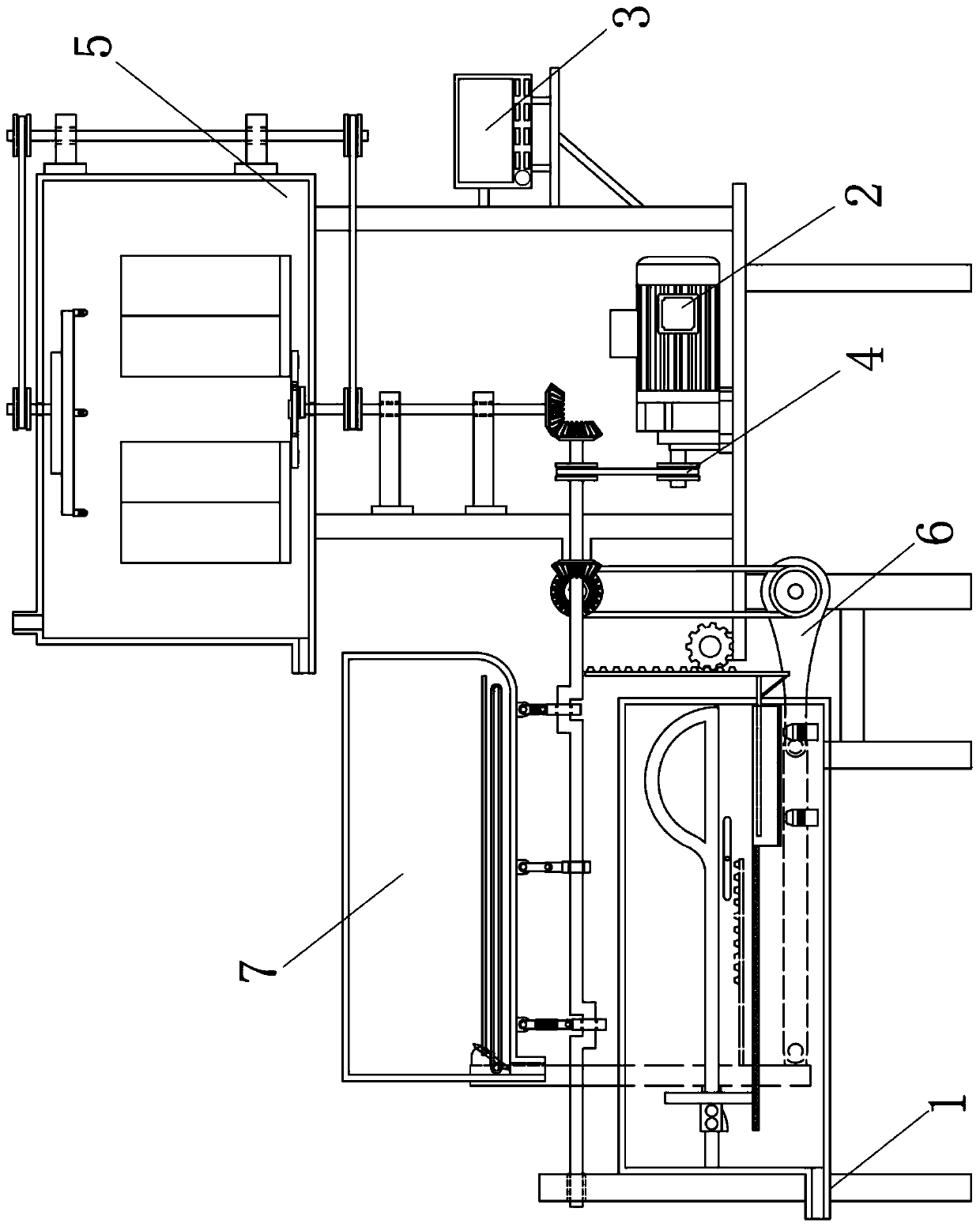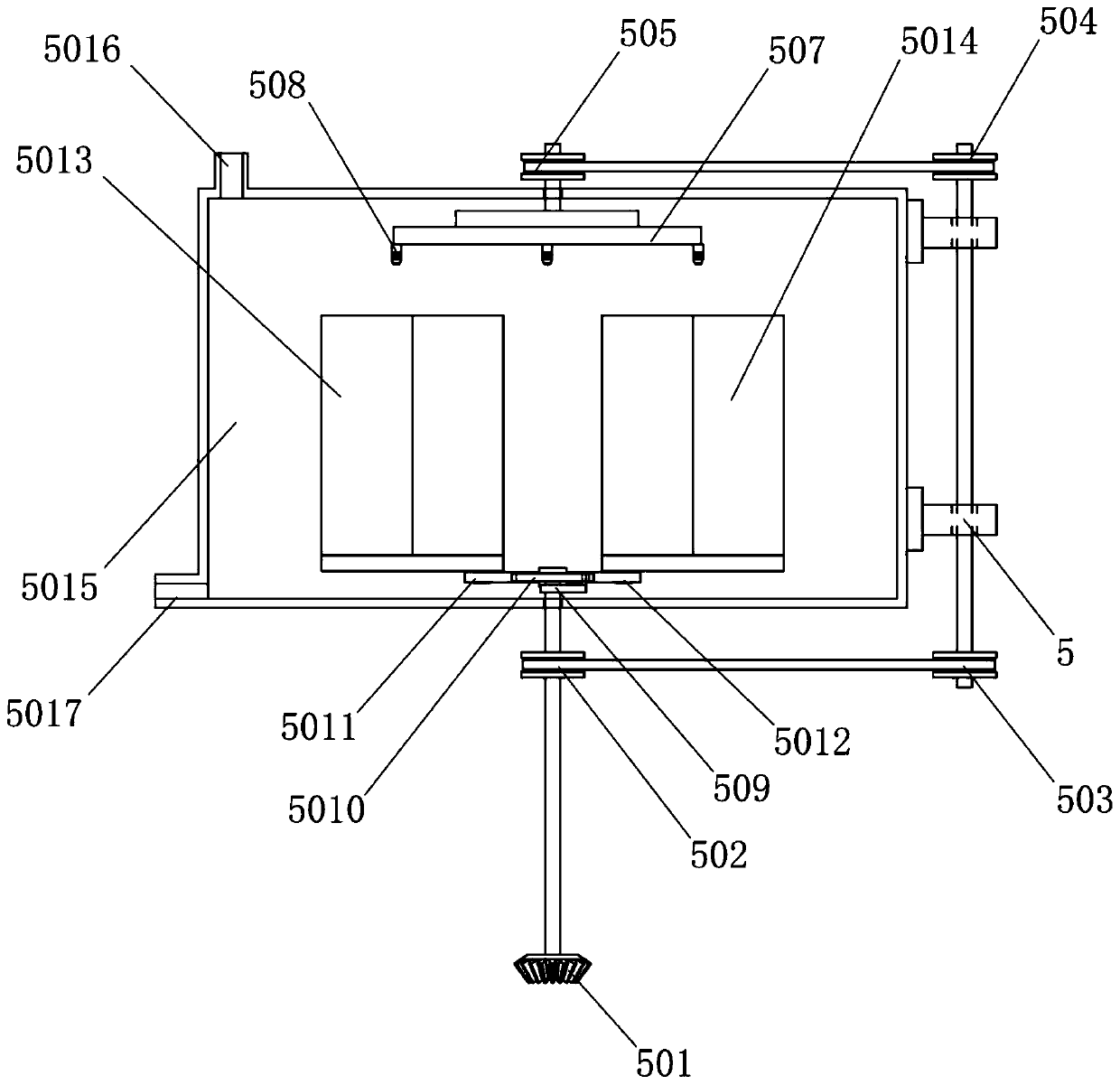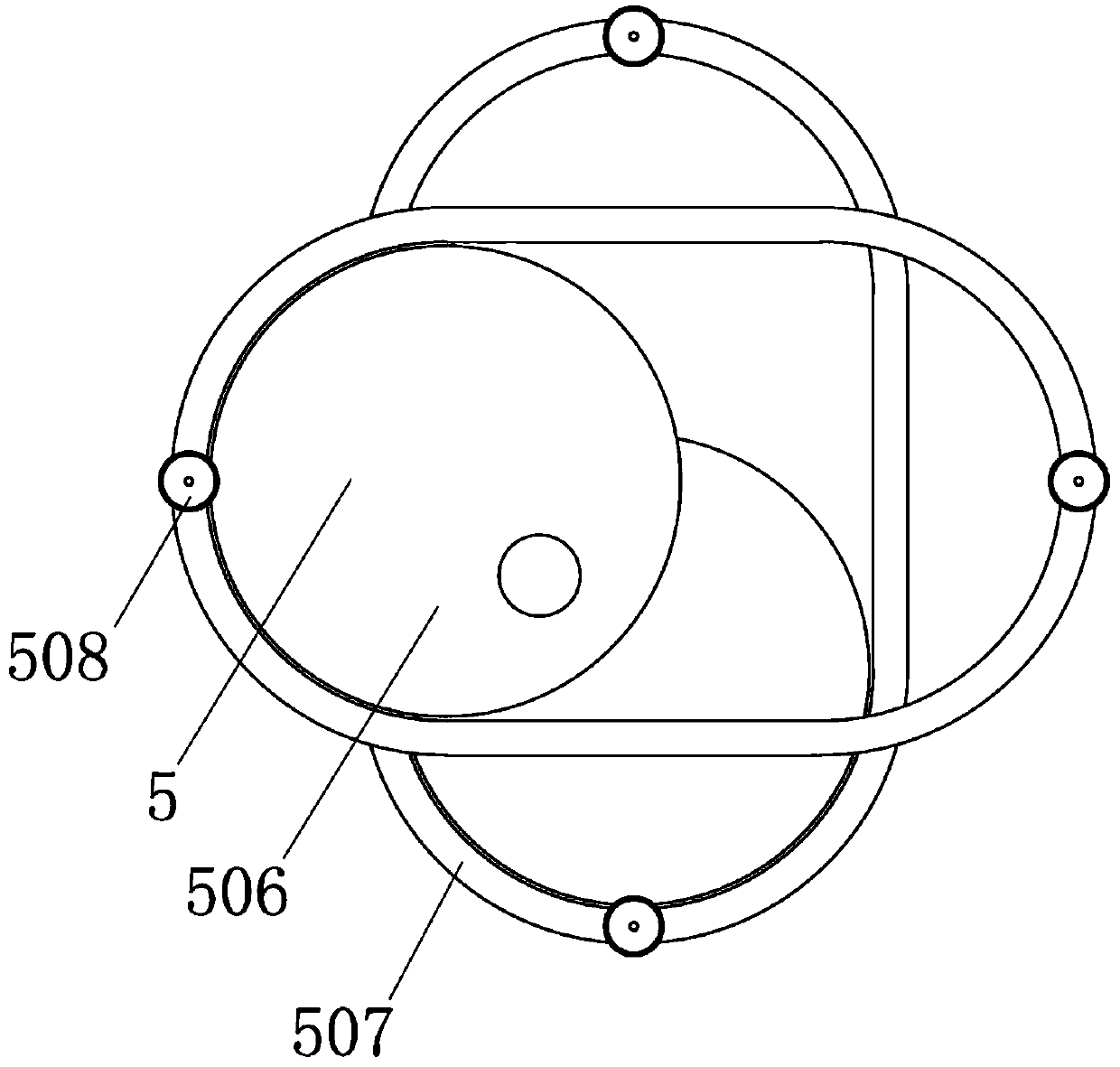Tap water treatment device
A treatment device, tap water technology, applied in water/sewage treatment, water/sewage multi-stage treatment, water/sludge/sewage treatment, etc., can solve the problems of complex filtration function, unsuitable for purification production, low filtration efficiency, etc.
- Summary
- Abstract
- Description
- Claims
- Application Information
AI Technical Summary
Problems solved by technology
Method used
Image
Examples
Embodiment
[0029] A tap water treatment device, such as Figure 1-7 As shown, it includes the mounting bracket 1, the servo motor 2, the control terminal 3, the first transmission wheel 4, the alum generating mechanism 5, the air-water flow recoil mechanism 6 and the wave advection mechanism 7; the inner bottom right part of the mounting bracket 1 and Servo motor 2 is bolted; the middle of the right end of the mounting bracket 1 is welded to the control terminal 3; the top right of the mounting bracket 1 is welded to the alum generating mechanism 5; the left bottom of the mounting bracket 1 is provided with an air-water flow recoil mechanism 6; installation The top left part of the bracket 1 is provided with a wave advection mechanism 7, and the rear right bottom of the wave advection mechanism 7 is connected with the alum generating mechanism 5, and the top right end of the wave advection mechanism 7 is connected with the air-water flow recoil mechanism 6; The middle of the left end of t...
PUM
 Login to View More
Login to View More Abstract
Description
Claims
Application Information
 Login to View More
Login to View More - R&D
- Intellectual Property
- Life Sciences
- Materials
- Tech Scout
- Unparalleled Data Quality
- Higher Quality Content
- 60% Fewer Hallucinations
Browse by: Latest US Patents, China's latest patents, Technical Efficacy Thesaurus, Application Domain, Technology Topic, Popular Technical Reports.
© 2025 PatSnap. All rights reserved.Legal|Privacy policy|Modern Slavery Act Transparency Statement|Sitemap|About US| Contact US: help@patsnap.com



